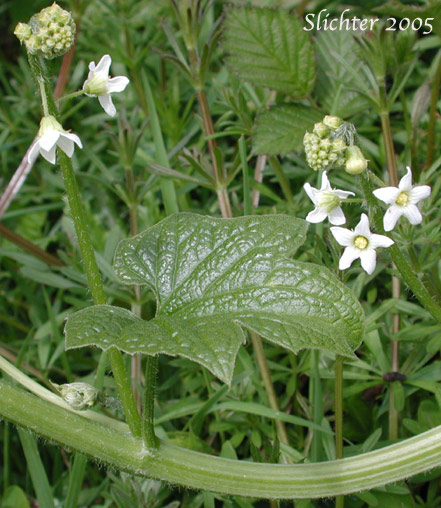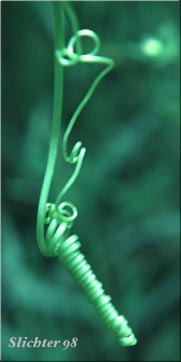

 The photo at right shows the
tendrils of the wild cucumber which help it climb objects.
The photo at right shows the
tendrils of the wild cucumber which help it climb objects.
Wild Cucumber is also called bigroot, manroot, and old-man-in-the-ground. It is a somewhat weedy, viny perennial that arises each year from a massive taprot. The stem is long and thick, with other long viny branches arising from the main stem.
The leaves are stalked and roughly heart-shaped, often reaching more than six inches in length and width. Numerous straight to spiralled tendrils loop off of the stem to wrap around other plants or objects to support the plant (See photo at right.). This is how the plant supports itself off of the ground, so the plant may be trailing or climbing.
The flowers are waxy-white and and star-shaped (5 petals). Individual flowers are single-sexed. The inflorescence is a loose raceme (See photos at top). The fruit are gourd-like, ovate, fleshy at first, with prickly spines (see photo below). The fruits and seeds are poisonous.
The wild cucumber is found in fields, bottom lands, open hillsides, and along roadsides.
The wild cucumber is found from southern British Columbia south through Washington and Oregon to northern California, and is found mostly west of the Cascade Crest. It may extend further east along the Columbia and Snake Rivers as far as the Oregon and Idaho border in the Snake River Gorge.
In the Columbia River Gorge, the wild cucumber may be found between the elevations of 100'-3000' from Troutdale, OR east to Horsethief Butte.